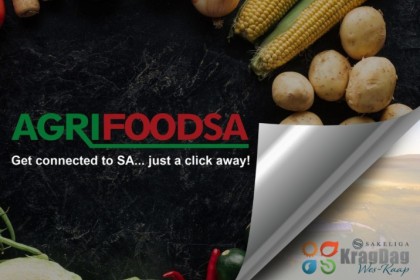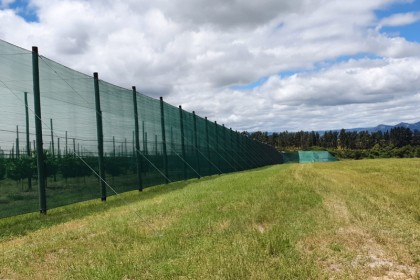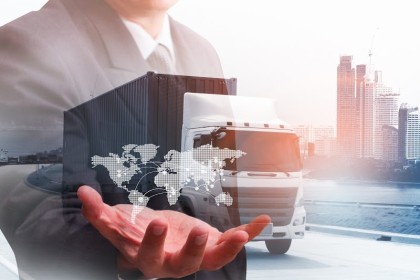
Low Pressure Sprinklers Make Farming More Sustainable
by Jacobus Freysen, Turfmanzi Irrigation
New low-pressure sprinklers can help farmers reduce their electricity costs by 50-percent.
Farming is already difficult due to unpredictable rainfall and increasing temperatures. It is even harder when electricity costs farmers anywhere from 73c to 94c per kW hour on average.
The majority of South Africa is kept in the dark regarding Eskom tariff increases and the politics of The National Energy Regulator of South Africa (NERSA). However, conservative estimates expect electricity costs to increase around 15 percent annually between 2020 and 2023.
With rapidly increases energy prices, the economic viability of farming is only going to decrease.
Keeping farm profits sustainable will require some adjustments, and one of the easiest to make is modifying irrigation practices. Pumping water for irrigation is perhaps the biggest source of energy consumption on the farm. Farmers cannot simply stop irrigating, but they can adopt new technologies designed to lower their energy requirements. The first step is converting high-pressure irrigation systems to energy efficient low-pressure models.
Low Pressures Save Energy
Extracting irrigation water from rivers, streams and aquifers is a highly energy intensive process.
Unfortunately, most irrigation systems still depend on high-pressure impact sprinklers to water fields. Impact sprinklers release enormous amounts of water using pressures between 2 to 4 bar.
They require pumps to push large volumes of water through pipeline at rapid velocities in order to maintain their wetted patterns.
Systems that are more efficient use low-pressure sprinklers designed to operate with just 1.0 to 1.4 bar. These sprinklers reduce pumping demands without reducing flow, so crops continue to receive their required amount of water. They also let farmers reduce their pump size or trim their impellers to reduce horsepower requirements.
More importantly, low-pressure sprinklers can further reduce energy by increasing irrigation efficiency.
High-pressure impact sprinklers throw small water droplets into the air in a concentrated stream. They tend to create fine droplets that are easily carried by wind and rapidly evaporate in dry atmospheric conditions. In contrast, low-pressure sprinklers tend to irrigate with larger droplets more resistant to strong winds and evaporation.
Well-designed, low-pressure systems can achieve a DU in excess of 95%. When less water is lost, the sprinklers can run for shorter intervals. Some low-pressure sprays, like Senninger’s Wobblers, apply water instantaneously in a 360-degree wetted pattern. Application intensity onto the soil is very low, with the effect being similar to that of light rain. This helps maintain the soil’s infiltration capabilities. Impact sprinklers apply water with a concentrated stream, causing severe soil disturbance, surface compaction and run-off. They generally take 60 to 120 seconds to cover their wetted circle.
Breaking Down the Costs
Energy savings vary depending on the specific irrigation system, hours of operation, flow, and pressure used. Still, farmers can expect to see energy savings of about 50-percent with low-pressure sprinklers like the aforementioned Wobblers.
For example, an average system with 40m³/ hour flow per hectare, operating 1000 hours per year at 94 cents per kW hour, could potentially save R 3140,88 per hectare per year or achieve around 58% in savings just by switching to low pressure sprinklers operating at 1.0 bar.
Don’t Just Lower Your System Pressure
Sprinklers designed for higher operating pressures cannot be used at lower pressures.
Every applicator is designed to operate within a range of flows and pressures. This keeps their application patterns uniform and helps them produce the correct droplet size. Operating impact sprinklers with just 0.70 to 1 bar will distort the sprinkler’s pattern and result in even lower efficiency. It will also make them distribute water in excessively large droplets that can cause runoff or soil sealing.
Farmers must be certain their new sprinklers are specifically designed for low-pressure operation before reducing pressures and pump sizes. The criteria for low pressure may vary from one manufacturer to another. However, most manufactures agree that anything over 2.5 bar is a mid-range to high-range sprinkler.
Picture:
Low pressure sprinklers only use around 177 to 1583 L/hr and 0.70 to 1 bar to operate
Picture:
Low pressure sprinklers can work well when combined with solar power pumps and gravity fed irrigation systems.
For other agricultural products and services, click here.












